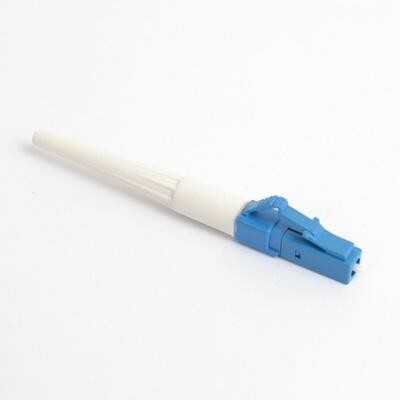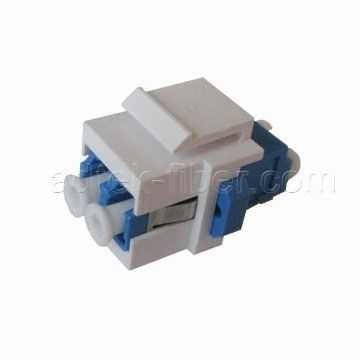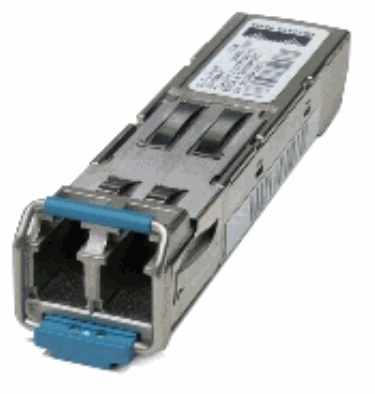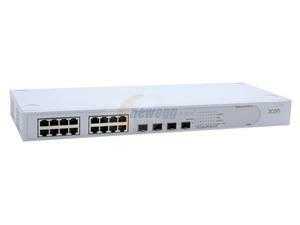27
3
The gist of my question:
- What is a "fiber optic" switch called?
- I.E. a layer 2 ethernet switch that uses fiber TX and RX connections and sends layer 2 network traffic between the fiber strands that are connected.
- Can someone purchase a dedicated fiber switch that does not have copper ethernet ports?
- What is the current average price of a device like this?
- Not necessarily looking for product endorsements, just information
- Might not make sense to go this route if it is too cost prohibitive
- What type of fiber connector is used for terminating a fiber strand into a jack on the wall?
- Can fiber be "patched" using two jacks and a "patch" cable?
- Is signal loss a concern with the longest runs at 100-200ft, a patch cable and media converters?
The full story:
My parents had unterminated fiber optic cable and terminated Cat5e run throughout their home when it was built in 2004. 10 years later the Cat5e isn't providing the throughput that my father needs to accomplish multiple streams of HD and fast system backups throughout the house. He can't reach gigabit speeds across the distance of the Cat5e runs.
We are both interested in terminating the fiber connections and using them as high speed "backbones" to copper switches in each room of the house. It would be easy to attain gigabit speeds (or better, eventually) using the fiber.
I have searched and searched for a "fiber optic switch" or "fiber optic router" and cannot find the correct term to describe this piece of hardware. We can use fiber media converters at the end points of each connection, however it would be nice to have a "patch panel" set up in the network closet in the basement that has fiber connections on it and switches the ethernet streams between the connections/systems in the house.
Each fiber media converter costs between $50-$100 a piece... After 10 or so terminated connections it might make sense to find a piece of hardware that does not require media converters. That would depend upon the cost of this hardware
Somewhat unrelated, if we are able to route between these fiber strands successfully, what is the physical connector type used in a jack on the wall? Just like RJ45 has a wall outlet (depicted below):

What is the fiber optic equivalent of this? In the interim could we "patch" a couple fiber strands together in the network closet? Would signal loss be of concern with a run length of 100-200 feet, a patch cable and two media converters? If that would work then it could be used until the funds are available for more.




I'd probably get 10 GbE switches and Cat 7 copper cabling (with GG45 connectors) if I were you. There is no need for fiber even with these kinds of cable runs. – bwDraco – 2016-04-24T20:10:51.177
7
What I imagine their house to look like: http://wbbw1.bwbx.io/cms/2012-03-15/feature_versailles12__03inline__405.jpg
– kobaltz – 2014-03-01T15:32:46.6772You're probably looking for a fiber channel switch, but you realize that the equipment costs for equipping a home for all fiber would be astronomical compared to switching to Cat-6, right? You're talking thousands, possibly tens of thousands. – Moses – 2014-03-01T15:39:22.317
@Moses Thank you! Since I didn't know what the technical term was for the hardware it was difficult to price it out. At the end of the day, if it's cheaper to use media converters, then we'll go that route. We have the copper gigabit equipment in place, we just need to use the bandwidth available in the fiber lines. – Shrout1 – 2014-03-01T15:59:18.203
@kobaltz Lol!!!! I certainly wish... I'm a chip off the old block; both my father and I geek out about a lot of stuff. So the network closet was a must :D The rest of the house pretty ordinary middle class, but we have fiber!!! – Shrout1 – 2014-03-01T16:00:35.960
@Moses Any thoughts on older used fiber channel switches from ebay? I'm finding a lot of 4GB stuff for cheap. – Shrout1 – 2014-03-01T17:08:41.040
If you're going the fiber optic route, you should also invest in a good meter. a scope and some fiber cleaning equipment. The physical connections vary, SC is probably the more common, followed by LC, FC and ST. The way you'd patch them would be with an FOT (fiber optic termiation) panel. Signal loss would not be a concern compared to copper over short distances, but fibers can be somewhat less resilient to bends and creases in the casing - they are much more fragile. – MaQleod – 2014-03-01T19:57:24.507
Connectors: http://en.wikipedia.org/wiki/Optical_fiber_connector#Images FOTs: http://galleryplus.ebayimg.com/ws/web/111171301617_1_0_1/1000x1000.jpg Meter: https://www.americanteledata.com/images/noyes/OPM6-&-OLS-6_S_web.jpg Scope: http://www.tecratools.com/media/productImages/35500.jpg Cleaning kit: http://ep.yimg.com/ty/cdn/justtoolkits/84854l.jpg Splice kit: http://i00.i.aliimg.com/wsphoto/v0/453100500/Wholesales-Splicing-tool-kit-Optical-Fiber-font-b-Splice-b-font-Installation-Kit-Field-Installable-Fast.jpg
– MaQleod – 2014-03-01T20:06:28.737Fiber network card: http://shop.leapmaker.com/images/6cd5_1.jpg Switch with fiber uplink option: http://i00.i.aliimg.com/img/pb/897/103/495/495103897_224.JPG All fiber switch: http://upload.ecvv.com/upload/Product/20117/China_26_Gigabit_Ports_Managed_SFP_Based_Fiber_Optic_Ethernet_Switch2011761514426.jpg
– MaQleod – 2014-03-01T20:10:36.0032
@Moses, Fiber channel is a different protocol, fiber optic cabling can carry Fiber Channel or Ethernet. You can get switches that will use fiber optic cabling but are not Fiber Channel. See here: http://en.wikipedia.org/wiki/Fibre_Channel
– MaQleod – 2014-03-01T20:12:47.7332It should be mentioned that properly terminated Cat5e cables are capable of full-throughput Gigabit speeds. If you're not reaching those speeds and you've verified the cabling, then you should look at your computer. Saturating a Gigabit link is actually quite a challenge. – longneck – 2014-03-07T14:49:08.297